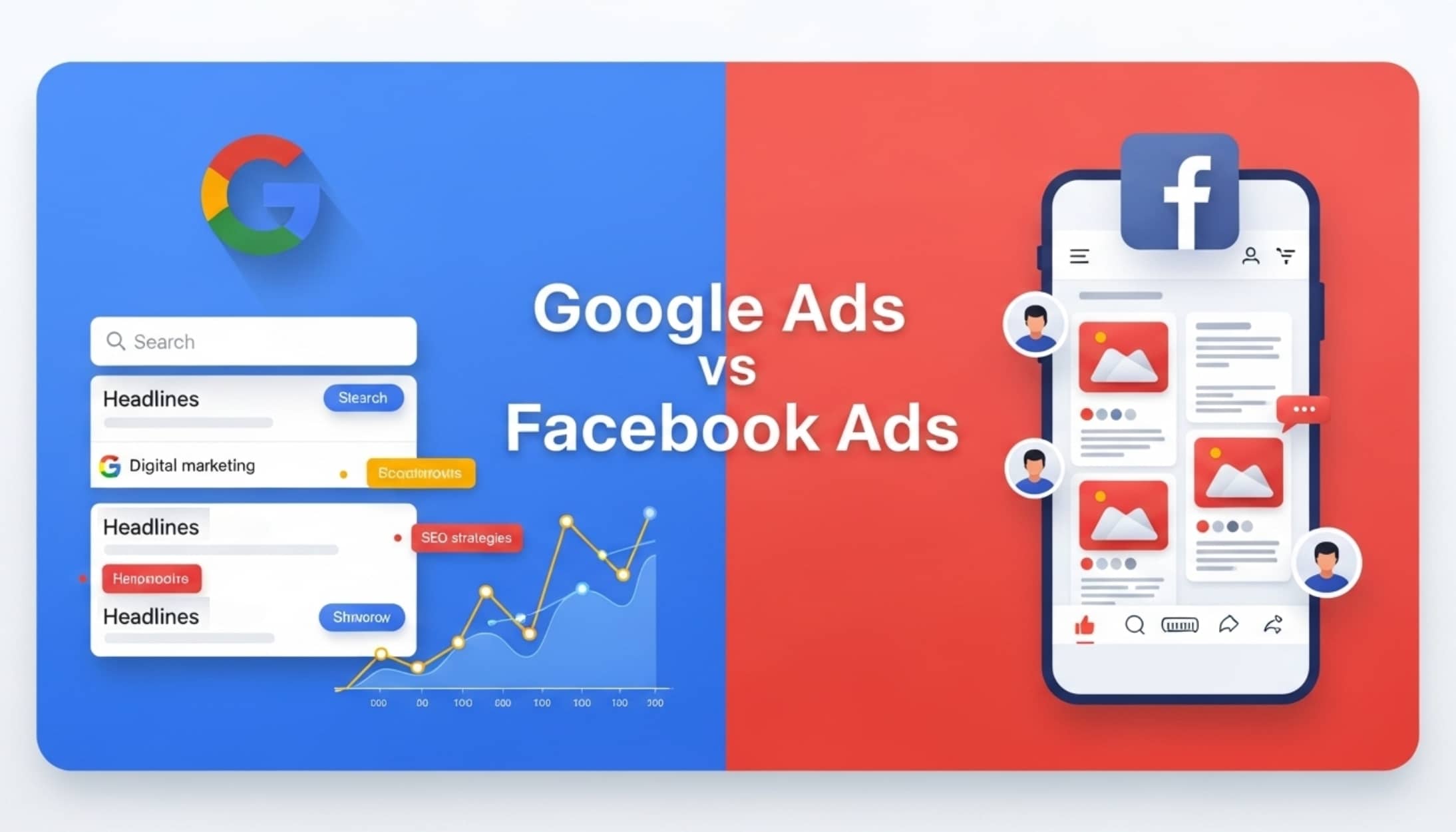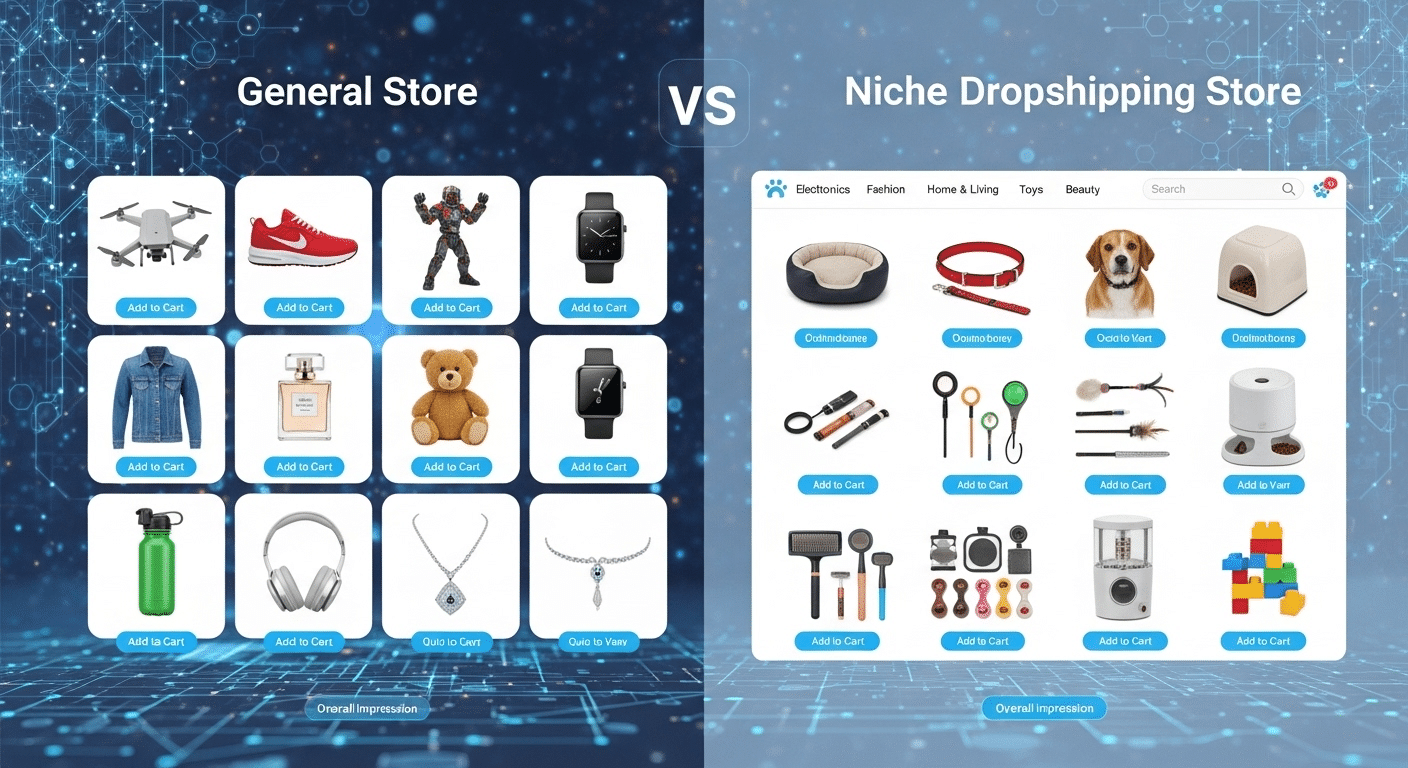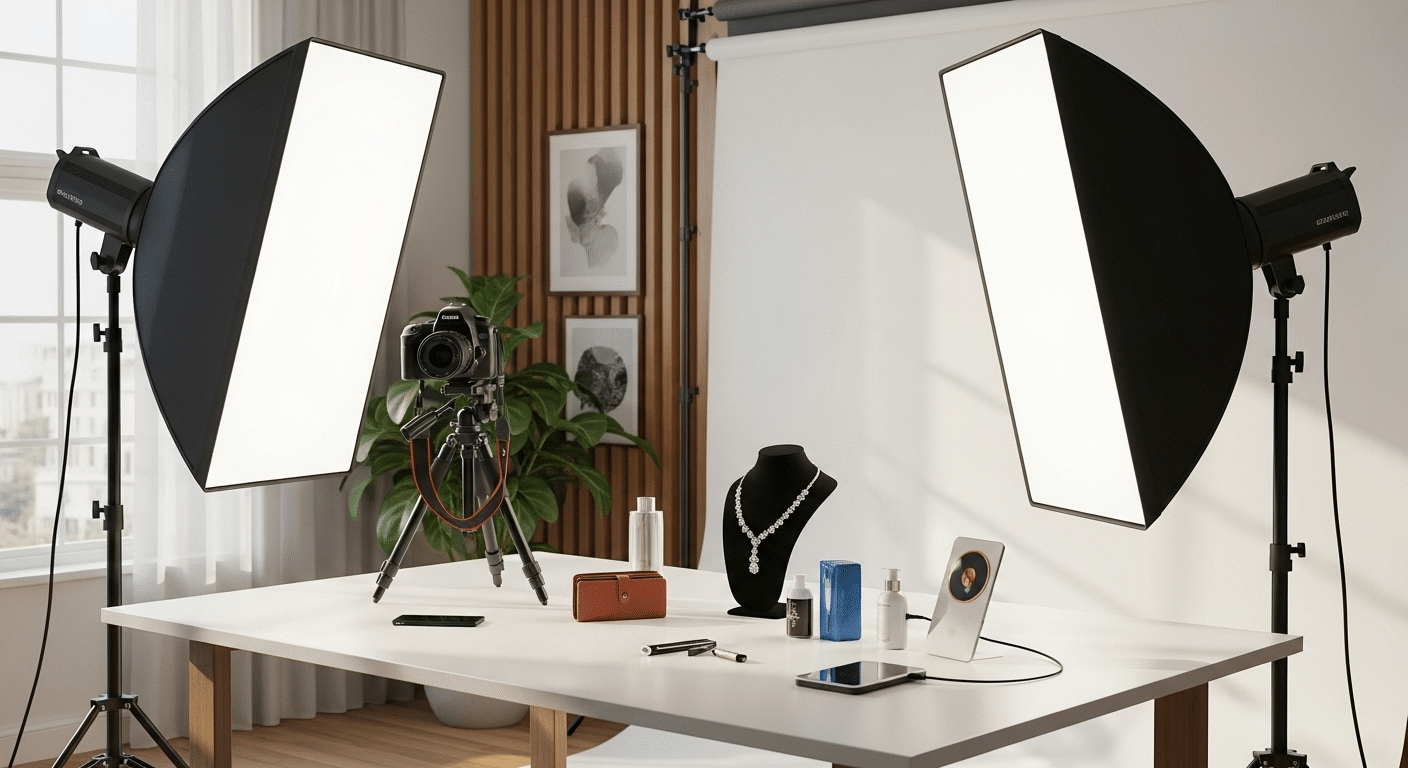In the competitive world of eCommerce, choosing the right advertising platform can make or break your business. The debate often boils down to Facebook Ads vs Google Ads ecommerce strategies. Both platforms are industry giants, but each offers unique strengths that can help you scale your store, drive sales, and maximize ROI.
In this comprehensive guide, we’ll explore the key differences, benefits, and drawbacks of both platforms, helping eCommerce brands choose the best fit for their goals.
1. Understanding the Platforms
Facebook Ads
Facebook Ads encompass not just Facebook but also Instagram, Messenger, and the Audience Network. These social platforms are content-rich, and Facebook Ads are heavily visual. They work predominantly on a push marketing model, allowing you to showcase products based on detailed targeting parameters such as interests, behaviors, demographics, and even online shopping activity. The power of Facebook’s pixel and retargeting is central to its attractiveness for eCommerce brands.
Google Ads
Google Ads is the largest search advertising platform and includes Google Search, YouTube, and Google Display Network. With Google Ads, you leverage pull marketing, targeting users based on the intent behind their search queries. Google Shopping Ads and Search Ads are particularly powerful for eCommerce. Advertisers bid on keywords that potential buyers are actively searching for, ensuring high buyer intent and relevancy.
2. Audience Targeting: Precision vs Intent
Facebook Ads: Precision Targeting
- Granular audience segmentation by interests, behaviors, life events, and more.
- Lookalike Audiences to reach new potential buyers similar to your best customers.
- Retargeting options keep your brand top-of-mind for recent website visitors.
Google Ads: High Intent
- Targets users actively searching for products or services like yours.
- Strong for keyword-based targeting and high-conversion, bottom-of-funnel prospects.
- Remarketing lists and affinity audiences for additional targeting depth.
3. Ad Formats and Creative Options
Facebook Ads
- Image, video, carousel, slideshow, and collection ads—great for showcasing products visually.
- Instagram Shopping integrations and dynamic product ads that auto-populate from your catalog.
- Story Ads and Reels Ads are tailored for mobile users.
Google Ads
- Text-based Search Ads appear when users enter relevant queries.
- Google Shopping Ads display product images, prices, and ratings right in search results.
- Responsive Display Ads for broad reach across the web.
- Video Ads on YouTube for product education and brand awareness.
4. Cost Structure and ROI
Facebook Ads
- Typically lower cost-per-click (CPC) and cost-per-impression (CPM) compared to Google.
- Costs can increase in saturated eCommerce niches or during peak seasons.
- Conversion rates may be lower for cold audiences but benefit from retargeting and creative testing.
Google Ads
- Higher CPCs, especially for competitive keywords, but conversion rates tend to be higher due to strong purchase intent.
- Google Shopping Ads can generate excellent ROI for optimized product feeds and proper bid strategies.
- Requires careful keyword research and constant campaign optimization to control costs.
5. Funnel Position and Buying Cycle
Facebook Ads
Excels at top and mid-funnel: building brand awareness, growing an email list, showcasing new product launches, and retargeting browsers with dynamic product ads.
Google Ads
Dominates the bottom-funnel: capturing demand from people ready to buy, price-shop, or compare competing products.
Best Practice: Many successful eCommerce companies utilize both, with Facebook nurturing and Google closing the sale.6. Analytics and Measurement
- Facebook Analytics provides data on reach, impressions, engagement, and attribution throughout the customer journey.
- Google Analytics/Ads focus more on clicks, search queries, conversions, and attribution from initial search to purchase.
7. Mobile Experience
- Facebook Ads: Most users browse social media on mobile, so ads are optimized for thumb-stopping imagery and fast loading times. Instagram and Facebook Shops further streamline in-app shopping.
- Google Ads: Shopping Ads, responsive search, and AMP landing pages ensure high-quality mobile experiences.
8. When to Use Facebook Ads vs Google Ads for Ecommerce
Facebook Ads Work Best If:
- Your products appeal to a visually driven audience.
- You want to build brand awareness or nurture cold leads.
- Your goal is to increase customer value (via retargeting, up-sell, or cross-sell).
- You have creative resources to develop engaging ad visuals.
Google Ads Work Best If:
- You want to generate ready-to-buy traffic quickly.
- Your products solve specific problems (people are actively searching for them).
- You need to compete on Google Shopping for comparative purchases.
- Your store has strong SEO and product feed management.
9. Pros and Cons Table: Facebook Ads vs Google Ads for Ecommerce
| Feature | Facebook Ads | Google Ads |
|---|---|---|
| Targeting | Highly granular (interests, behaviors, lookalikes) | Keyword/search intent-based; excellent for demand capture |
| Ad Formats | Image, video, carousel, collection, stories | Text, Shopping (with images), video, responsive display |
| Cost | Lower CPC/CPM for broad/niche targeting | Higher CPC, but higher conversion intent |
| Funnel Stage | Top and mid-funnel, plus strong retargeting | Bottom-funnel/buying intent and price comparisons |
| Best For | Building audiences/brand, creative showcasing, retargeting | Capturing high-intent shoppers, ready-to-buy prospects |
| Analytics | Social engagement, reach, pixel data | Search terms, click data, robust conversion tracking |
10. SEO Optimization Tips for “Facebook Ads vs Google Ads Ecommerce”
- Use the focus keyword (“facebook ads vs google ads ecommerce”) naturally throughout.
- Include related keywords like eCommerce advertising, performance marketing, ROI, targeting, Google Shopping, and Facebook retargeting.
- Structure content with clear headings, FAQs, and a summary/conclusion.
- Add a compelling meta description and use schema markup for review/comparison posts.
11. Frequently Asked Questions (FAQs)
- Should eCommerce brands use both Facebook Ads and Google Ads?
- Yes, an omnichannel approach lets you build awareness, nurture leads, and convert ready-to-buy shoppers. Use Facebook for discovery and Google for intent-driven sales.
- Which has better ROI: Facebook Ads or Google Ads for ecommerce?
- ROI depends on your niche, product, and targeting strategy. Typically, Google Ads convert better for bottom-funnel, while Facebook Ads excel in customer acquisition and remarketing.
- How much should I budget for eCommerce ads?
- Start with at least $500–$1,000/month per platform, test for 4–8 weeks, then scale the winning campaigns.
- Which is easier to set up for a new ecommerce store?
- Facebook’s setup is simpler for beginners, but Google Ads may generate faster sales if your product has instant demand.
Conclusion: Facebook Ads vs Google Ads Ecommerce—Which Is Best?
There’s no single winner in the Facebook Ads vs Google Ads ecommerce debate. The best platform depends on your product type, target audience, business goals, and marketing resources.
For most eCommerce brands, the answer is not either/or, but both—leveraging the visual storytelling of Facebook for discovery and the intent-driven power of Google Ads for closing sales. Take time to test, analyze, and optimize your campaigns to unlock the full potential of both platforms.
By mastering the strengths of each, you’ll be poised for scalable, sustainable eCommerce growth.





